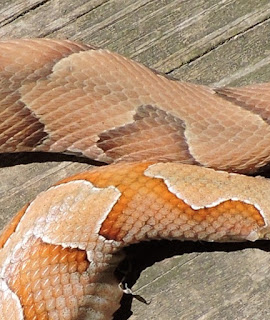By Jennifer Ailor
As
Master Naturalists, we have had more than a few encounters with ticks
in the woods, prairies and glades we frequent. For that matter, you can
pick up a tick in your backyard.
But ticks can
make you very sick, and without proper treatment of tick-borne
diseases, people sometimes die. Not to sound the alarm bells, but you do
need to take ticks seriously. As well I know. Two weeks after I removed
a couple of seed ticks from my abdomen, I came down with flu-like
symptoms that in the span of a week morphed into severe dehydration and a
trip to the ER with fever and a tripping heart. Ten days in the
hospital and rehab will give you a new respect for a tick.
My
particular disease turned out to be ehrlichiosis, which according to
Dr. William Sistrunk, infectious disease physician at Mercy Hospital in
Springfield, is the most common tick-borne disease in Missouri. It's
carried by the
lone star tick, also common in the west/south central region of the country that the Ozarks borders.
Ehrlichiosis is easily treated by doxycycline, but unfortunately one encounter doesn't protect you against future ones.
Tick-borne Diseases in Missouri
There
are several tick-borne diseases you can pick up in Missouri, and a
couple of new tick viruses (Heartland is one) have emerged in recent
years and are being studied at Mayo Clinic and the Centers for Disease
Control and Prevention. For lots of information on different tick-borne
diseases found in Missouri, go to
this health.mo.gov link. Here are some highlights:
Ehrlichiosis
- Symptoms appear about 14 days after exposure. Among the symptoms are
fever, headache, myalgia, malaise, anemia, nausea, vomiting and rash.
Treatment is with doxycycline.
Rocky Mountain Spotted
Fever - RMSF is common, hard to diagnose and fatal if not treated with
doxycycline or other antibiotics. It begins with flu-like symptoms, with
a spotted rash appearing on the fifth or sixth day of infection. It is
carried in Missouri by the American dog tick.
Tularemia
- This disease is more frequently picked up by handling infected
animals, especially rabbits. Hunters or others who skin, butcher and
cook wild game are at particular risk. But ticks can carry it, too.
Interestingly, tularemia is classified as a potential bioterriorism
weapon! Skin lesions and swollen glands are among the early symptoms
that appear usually within five days of exposure. It is treated with
streptomycin and gentamicin.
Q
Fever - Like tularemia, you're more likely to pick up Q fever from
animals than a tick. Generally, cattle, sheep and goats are the
carriers, which a handler can pick up when animals are giving birth.
It's a serious disease, though, with acute and chronic varieties, and
can cause miscarriages and early-term deliveries in pregnant women.
Lyme-like
Disease - There is no Lyme disease in Missouri, but it is the most
common tick-borne disease in the U.S. blacklegged ticks carry it. A
bull's eye skin lesion at the site of the bite appears about 80% of the
time. While our state is Lyme-free, people can acquire Lyme-like
illnesses, which if not treated with antibiotics can spread to joints,
heart and nervous system.
Prevention
The Missouri Department of Health and Senior Services advises:
· Avoid tick habitats during peak times of year (April through September).
·
Use tick repellents with 20% to 50% DEET; the American Academy of
Pediatrics says repellents containing up to 30% DEET can be used on
children over two months of age.
· Wear clothes that will help shield you from ticks; permethrin, sprayed on clothes or manufactured in clothes, will kill ticks.
· Check frequently for ticks and remove promptly with tape if crawling, tweezers if biting.
 |
| Big day - removed with "tick tape" |
There
are various natural tick repellents, such as rose of geranium essential
oil, but talk with your doctor, do some research at the
CDC site online
and check with local health product stores to see what they recommend.
Inspect your skin and clothes inside and out for ticks when you come
in. Remove crawling ticks with tape.
To identify ticks in different regions of the country, go to tickencounter.org.
Tick prevention suggestions at Tickencounter.org
 I
found this gall on the underside of a Gray Dogwood leaf tonight. The
upper side had only a faint dimple on the surface. This was the only
one I found. A review of Bugguide identified it as Craneiobia tuba, one of the many gall midges (Cecidomyiinae).
The larva are said to be orange and the adults haven't been raised.
And that was the end of what is known about them.
I
found this gall on the underside of a Gray Dogwood leaf tonight. The
upper side had only a faint dimple on the surface. This was the only
one I found. A review of Bugguide identified it as Craneiobia tuba, one of the many gall midges (Cecidomyiinae).
The larva are said to be orange and the adults haven't been raised.
And that was the end of what is known about them.




































